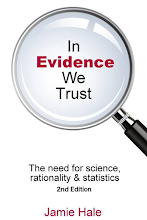Generally, emotion helps us remember (Reisberg, 2010). Emotional events activate the amygdala, and
various studies, show the amygdala (region of brain that coordinates autonomic
and endocrine responses in conjunction with emotional states) plays a key role
in enhancing explicit memory (conscious, declarative) for both pleasant and
unpleasant emotional stimuli through modulation of encoding and consolidation
processes (Hamman, 2001). In addition
to activation of the amygdala, emotional events are likely to be important to
us, which leads to enhanced focused attention, thus facilitating memory. Moreover, we often think about emotional
events hours, days or weeks after they occur.
This type of memory rehearsal may lead to increased memory connections,
enhancing the likelihood of retrieval.
Genes and Memory
Eric Kandel, Nobel Laureate, suggests another means in which
emotional events may contribute to enhanced and efficient memory. Generally, repetition is required for the formation
of long-term memory. However, a highly
emotional event, such as a life-threatening situation, could bypass the normal
limits on long-term memory (Kandel, 2006).
“In such a situation, enough MAP kinase molecules would be
sent into the nucleus rapidly enough to inactivate CREB-2 molecules, thereby
making it easy for protein Kinase [enzyme that adds a phosphate group to
proteins, which activates some proteins and inactivates others] A to activate
CREB-1 and put the experience directly into long-term memory.”
(Kandel, 2006, pp. 264-265)
The extraordinary memory shown by some people may be due to
genetic differences in CREB-2 that limit the activity of this repressor protein
in relation to CREB-1. CREB-1 is a
protein that activates expression of CREB – a gene that initiates protein
synthesis that is essential for the storage of long-term memory. CREB-2 is a protein that suppresses the
expression of CREB. Other genes as well
as CREB have been found to influence memory (Kandel, 2006). Kandel’s work has been mostly focused on
CREB- dependent gene expression.
“[O] ther transcription factors, such as SRF, c-fos, EGR-1
or NF-κB are also likely to contribute to the transcriptional regulation that
accompanies long-lasting forms of synaptic plasticity for different forms of
learning in different animal species.” (Kandel, 2012, 14)
CREB-1 and CREB-2 may be involved in age related memory
loss. Aging may represent a weakening
of the ability to activate CREB-1, but also a weakening of the signals needed
to stop the action of CREB-2.
When I first watched the video below I assumed that Jill
Price may have some abnormalities in gene expression
The Woman Who Could Not Forget
An article featured in Wire paints a different
picture of Jill’s superb memory.
References
Hamann, S. (2001).
Cognitive and neural mechanisms of emotional memory. Trends in Cognitive Sciences, 5
(9), 394-400.
Kandel, E. (2006). In
Search of Memory: The Emergence of A New Science of Mind. New York: W.W. Norton & Company.
Kandel, E. (2012). The molecular
biology of memory: cAMP, PKA, CRE, CREB-1, CREB-2, and CPEB. Molecular Brain, 5,14.
Reisberg, D. (2010).
Cognition: Exploring The Science of The Mind 4th Edition. New York: W.W. Norton & Company.




